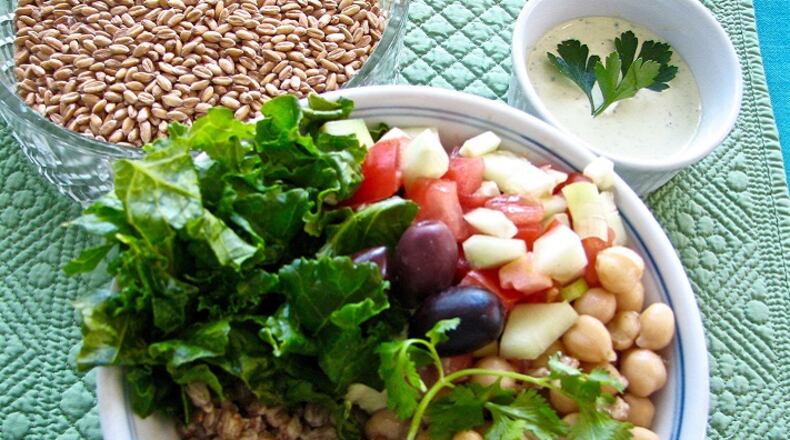What does it mean to eat healthy?
Turn to the Dietary Guidelines for Americans to get started. Eating right doesn't have to be complicated -- simply begin to shift to healthier food and beverage choices.
--Emphasize fruit, vegetables, whole grains and low-fat or fat-free milk and milk products.
--Include lean meats, poultry, fish, beans, eggs and nuts.
--Minimize saturated fats, trans fats, salt (sodium) and added sugars
Think about calories like your bank account -- when you spend money (or calories) you want to make it count. Think nutrient-rich rather than "good" or "bad" foods. The majority of our food choices should be packed with vitamins, minerals, fiber and other nutrients, and lower in calories. Making smart food choices can help you stay healthy, manage your weight and be physically active.
Eat a variety of foods from all the food groups to get the nutrients your body needs. Fruits and vegetables can be fresh, frozen or canned. Specifically, eat more dark green vegetables such as leafy greens and broccoli, and orange vegetables including carrots and sweet potatoes. Try to vary protein choices with more fish, beans and peas. And eat at least 3 ounces of whole-grain cereals, breads, crackers, rice or pasta every day -- don't skip the carbs.
When it comes to fats, to help reduce the risk of heart disease, look for foods low in saturated fat and trans fat. Most of the fats you eat should be monounsaturated and polyunsaturated oils. It's also important to add foods high in omega 3s, such as salmon, flax or chia, walnuts and other nuts.
To be successful with that resolution, make time for it -- make time to exercise or to prepare foods to eat healthy. Put it on your calendar so you'll give it priority. Your schedule is likely a stumbling block to making healthy foods at home. Can your slow cooker help? Can you purchase already cut veggies and pre-sliced meat for the stir-fry? Can you plan meals on Sunday afternoon for the week? Maybe you just need a new blender to make smoothies in the morning or a jar for your overnight oatmeal. Maybe it's as simple as having the right foods in your pantry.
At age 88, my mom still makes lists to accomplish what she wants to get done each day and what she plans to purchase at the grocery store (based on the ads, of course). Make a list of the foods you plan to eat; make a list of the foods you do eat and make a list of your exercise goals and accomplishments.
You can do this. Take the journey one healthy meal at a time. The hardest part is often taking that first step.
Q and A
Q: Is it true that meats are plumped with additives?
A: Who doesn't want to bite into a succulent piece of chicken or receive kudos for cooking a juicy piece of meat? To make certain that your efforts in the kitchen are rewarded with tender delicious food, raw meat and poultry products are sometimes enhanced, marinated or plumped with injected water, salt and other flavorings and additives to keep the product moist and flavorful during cooking. The USDA estimates that up to 20 percent of poultry, 15 percent of beef and 90 percent of pork (including ham) may contain some kind of added solution. Depending on the liquid used, these enhancements may add 200-500 mg of sodium per serving compared to products that have not been enhanced. With recommendations from some health agencies to reduce daily sodium intake to 1,500 mg, that additional sodium might be an issue for some people. The USDA requires the solutions added to meat and poultry to be identified on the label. Additionally, some meat and poultry may contain moisture from processing, not necessarily injected for flavor or juiciness. The label must then indicate "retained water." -- Environmental Nutrition.
About the Author

